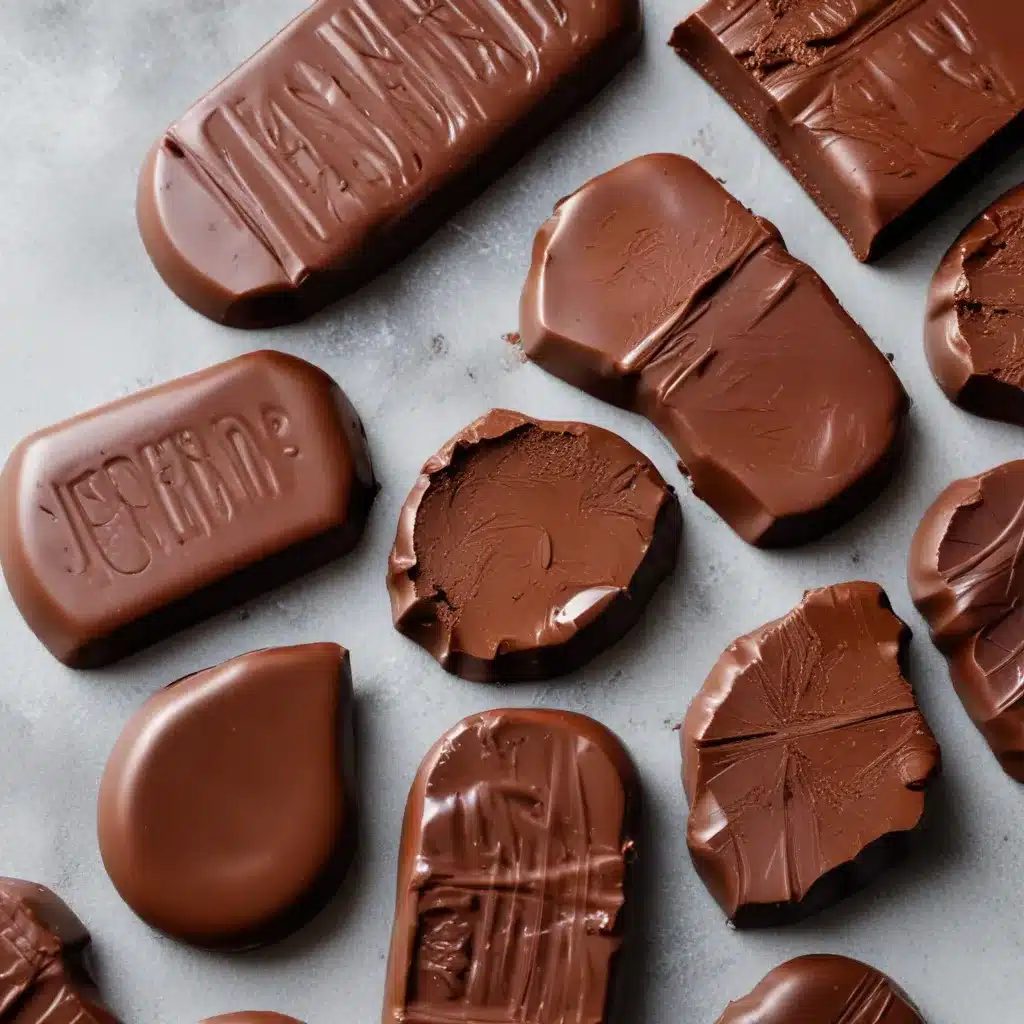
Understanding the Science of Chocolate Tempering
Chocolate tempering is a crucial step in creating high-quality, professional-looking chocolate confections. It’s a delicate process that requires precision and patience, but the rewards are well worth it. By tempering chocolate correctly, you’ll achieve a glossy sheen, a satisfying snap, and a smooth, velvety texture that will delight your taste buds.
The science behind chocolate tempering lies in the crystal structure of cocoa butter, the primary fat in chocolate. Cocoa butter can crystallize in several different forms, known as polymorphs, each with its own unique properties. The key is to encourage the formation of the stable, desired Form V crystals, which will give your chocolate the perfect texture and appearance.
Polymorphs and Crystal Formation
Cocoa butter is a polymorphic fat, meaning it can solidify into different crystal structures depending on the temperature at which it’s cooled. There are six recognized polymorphic forms, labeled as Form I through Form VI, each with its own melting point and characteristics.
The ideal Form V crystals are responsible for that glossy shine, crisp snap, and smooth melt-in-your-mouth sensation. These crystals form when the chocolate is tempered correctly, with the right balance of heating, cooling, and agitation.
In contrast, the other forms (I-IV and VI) can result in dull, soft, or even white-streaked chocolate that is prone to blooming and melting at room temperature. Mastering the tempering process is essential to prevent these undesirable outcomes.
Tempering Methods: Primary and Secondary Nucleation
There are two main approaches to tempering chocolate: primary nucleation and secondary nucleation. Both methods aim to create the ideal Form V crystal structure, but they differ in their execution.
Primary Nucleation
In a primary nucleation system, the chocolate is first cooled to a temperature between 78°F (25.5°C) and 82°F (27.7°C) and then sheared on a cold surface, typically between 65°F (18.3°C) and 70°F (21.1°C). This process encourages the formation of Form V crystal nuclei, which will then grow as the chocolate is reintroduced to the tempered chocolate at a temperature range of 83°F (28.3°C) to 89°F (31.6°C).
Continuous tempering machines that have multiple temperature zones are examples of primary nucleation systems, as they carefully control the cooling and shearing of the chocolate.
Secondary Nucleation
Secondary nucleation systems rely on the addition of pre-crystallized “seed” chocolate to the melted chocolate. The seed chocolate, which contains established Form V crystals, is dispersed into the melted chocolate at a temperature where the Form V crystals have not fully melted out.
As the temperature of the chocolate mixture drops below the melting point of Form V crystals, the seed chocolate triggers the formation of additional Form V crystals throughout the batch. Examples of secondary nucleation systems include revolving bowl temperers and static melt pots.
Identifying a Well-Tempered Chocolate
Recognizing the signs of a properly tempered chocolate is crucial for ensuring consistent results. There are a few key indicators to look for:
-
The Purple Haze Effect: When light reflects through liquid chocolate containing Form V crystals, it can create a subtle purple haze or sheen on the surface. This visual cue is a telltale sign of a well-tempered chocolate.
-
Texture and Shine: A tempered chocolate should have a smooth, matte shine to it, with well-defined ridges or edges. Untempered chocolate will appear duller and more hazy.
-
The Five-Minute Plastic Spoon Test: Dip a plastic spoon into the chocolate, allow it to chill in the refrigerator for 5 minutes, and then observe the results. A well-tempered chocolate will release cleanly from the spoon, have a glossy finish, and break with a satisfying snap.
Mastering these visual cues and testing methods will help you consistently identify when your chocolate has been properly tempered, ensuring the best possible results for your creations.
Tips for Consistent Chocolate Tempering
Achieving the perfect temper takes practice, but these tips can help you on your journey to becoming a chocolate tempering pro:
-
Control Temperatures Precisely: Invest in an accurate digital thermometer and closely monitor the chocolate’s temperature throughout the process. Even small fluctuations can impact the crystal formation.
-
Agitate Continuously: Consistent stirring or shaking of the chocolate is essential to promote uniform crystal growth and prevent uneven tempering.
-
Seed Wisely: If using a secondary nucleation method, be sure to add the right amount of pre-crystallized chocolate seed to kickstart the tempering process.
-
Patience is Key: Rushing the tempering process or trying to shortcut the steps can result in subpar chocolate. Take the time to follow the proper procedures.
-
Adjust for Chocolate Type: The ideal tempering temperatures and techniques may vary slightly between dark, milk, and white chocolates. Experiment to find the sweet spot for each.
-
Troubleshoot and Adapt: If you encounter issues like blooming or dull appearance, don’t be afraid to adjust your approach. Closely observe the chocolate’s behavior and make necessary modifications.
With practice and a keen eye for detail, you’ll be able to temper chocolate like a true culinary artist, creating confections that are as visually stunning as they are delicious.
Putting Tempered Chocolate to Use
Once you’ve mastered the art of tempering, the possibilities for your chocolate creations are endless. From molded chocolate pieces to glossy enrobed treats, tempered chocolate is the foundation for achieving professional-level results.
Utilize your newly acquired tempering skills to elevate your baking and confectionery endeavors, whether it’s crafting elegant chocolate showpieces, decorating cakes and desserts, or simply enjoying a perfectly snapped chocolate bar. The Kitchen Warrior team is excited to see the delectable delights you’ll whisk up with your newfound chocolate tempering expertise!
For more information and inspiration, be sure to visit https://kitchenwarrior.co.uk/, where you’ll find a wealth of culinary resources to sharpen your skills and ignite your culinary passions.


